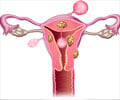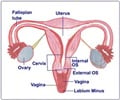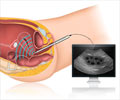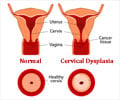Hysterectomy - Surgical Operation
C. Minimally Invasive Techniques -Laparoscopically assisted vaginal hysterectomy (LAVH)
This is similar to the vaginal hysterectomy procedure described above, but to help with better dissection of the abdominal tissues laparoscopy is used.
A laparoscope is a thin cylindrical telescope with a magnifying glass-like device at the end of it. Certain women would be best served by having laparoscopy used during vaginal hysterectomy as it allows the rest of the abdomen to be carefully inspected during surgery.
The procedure is performed under general anesthesia.
- After administering anesthesia the abdomen and vagina are prepared with an antiseptic solution.
- LAVH begins with several small abdominal incisions inferior to the belly button, which allow the insertion of the laparoscope and other surgical tools.
- In order for the surgeon to observe the inside of the body clearly, the peritoneal cavity is inflated with gas (usually carbon dioxide).
- A camera, which is attached to the laparoscope, captures and produces a continuous image that is magnified and projected onto a television screen.
- Using the laparoscopic surgical tools, the tissues and vessels surrounding the uterus are cut and tied.
- The uterus and cervix is then removed through the vagina, and the top of the vaginal cuff is sutured.
The fallopian tubes and ovaries also may be removed during this surgical procedure.
Compared to simple vaginal hysterectomy or abdominal hysterectomy, LAVH can be a more expensive procedure and is more prone to complications. It requires longer to perform, and is associated with longer hospital stay.
If a woman has a history of prior surgery to the abdomen, or if she has a large pelvic tumour, LAVH is not indicated and a regular abdominal hysterectomy is probably best.















